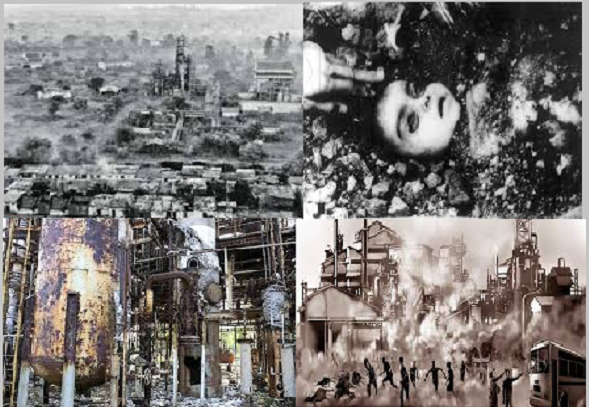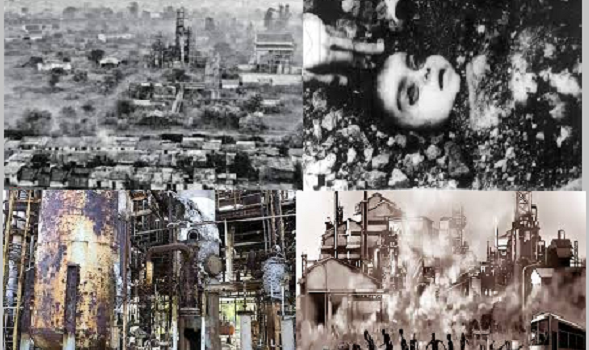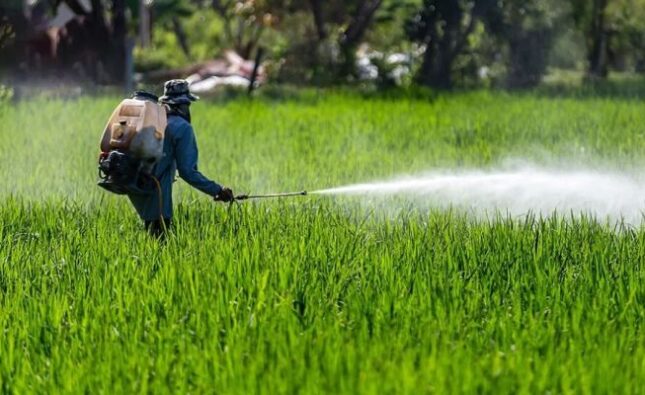What was the Bhopal Gas Tragedy & How Many People were died
The Bhopal gas tragedy is one of the world’s worst industrial disasters, which occurred on the night of December 2-3, 1984, in Bhopal, Madhya Pradesh, India. It was caused by a massive release of toxic gases from a pesticide plant owned by the Union Carbide India Limited (UCIL), a subsidiary of Union Carbide Corporation, an American multinational chemical company.
The disaster was triggered by the accidental release of methyl isocyanate (MIC) gas, which is a highly toxic and volatile substance used in the production of pesticides, especially the pesticide called “Sevin.” Due to a combination of factors, including poor safety standards, maintenance issues, and inadequate training, water entered a tank containing a large quantity of MIC, causing a chemical reaction that led to the release of the deadly gas.

The gas leak resulted in the immediate death of thousands of people and caused injuries to hundreds of thousands. The affected population suffered from a range of health problems, including respiratory issues, blindness, skin disorders, and other long-term health complications. The exact number of fatalities is still a subject of debate, with estimates ranging from several thousand to over 20,000 people.
The tragedy had devastating social, economic, and environmental impacts on the affected communities in Bhopal, many of whom are still dealing with the consequences decades later. The disaster sparked widespread outrage and raised concerns about industrial safety and corporate accountability. It also led to various legal battles and compensation claims against Union Carbide.
The response of the authorities and the corporation to the disaster was heavily criticized for being inadequate and slow. In 1989, Union Carbide settled with the Indian government for $470 million as compensation for the victims. However, many argued that the amount was insufficient, and some victims and their families continue to fight for justice and proper compensation.
The Bhopal gas tragedy remains a significant event in India’s history and a stark reminder of the need for stringent industrial safety regulations and corporate responsibility to prevent similar disasters in the future.
The exact number of people killed in the Bhopal gas tragedy is a subject of debate, and there is no consensus on the precise figure. The incident occurred on the night of December 2-3, 1984, in Bhopal, Madhya Pradesh, India, when a toxic gas leak from a pesticide plant owned by Union Carbide India Limited (UCIL) resulted in a massive disaster.
Immediate death toll estimates vary widely, with some sources stating that several thousand people died within the first few days of the disaster. However, the Indian government’s official figure for immediate deaths was around 3,800. Many survivors and activists believe that the actual number of fatalities is higher due to underreporting and inadequate recording of deaths.
In the years following the tragedy, thousands more died due to the long-term health effects and complications resulting from exposure to the toxic gas. Estimates of the total death toll over time range from 15,000 to over 20,000 people.
The difficulty in accurately determining the exact number of fatalities is due to several factors, including the chaotic circumstances during and after the incident, the lack of proper record-keeping, and the long-term health effects that led to deaths over several years after the disaster.
Regardless of the exact numbers, the Bhopal gas tragedy remains one of the world’s most devastating industrial disasters and a symbol of the importance of industrial safety and corporate accountability.







